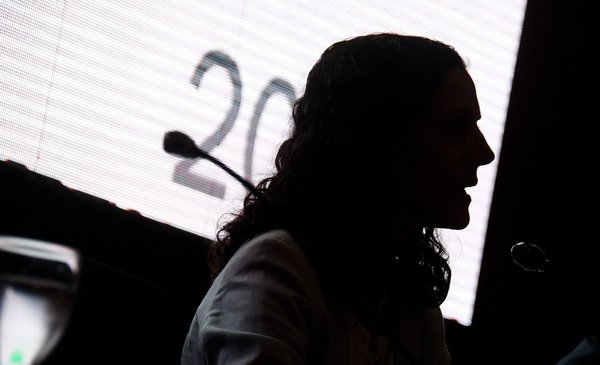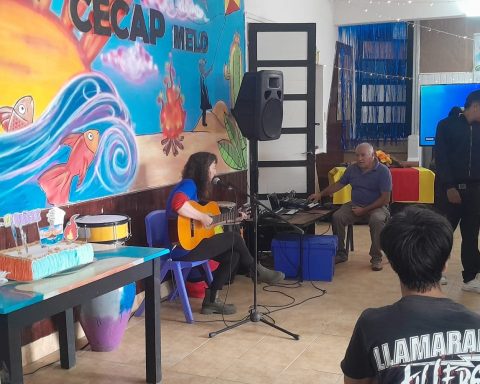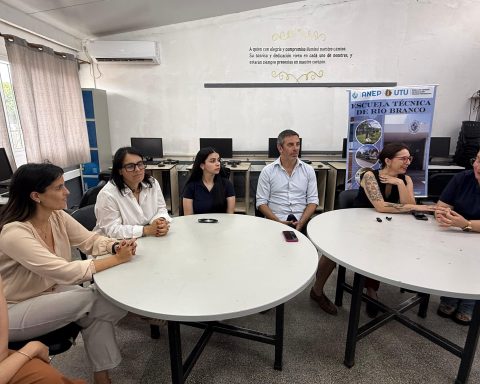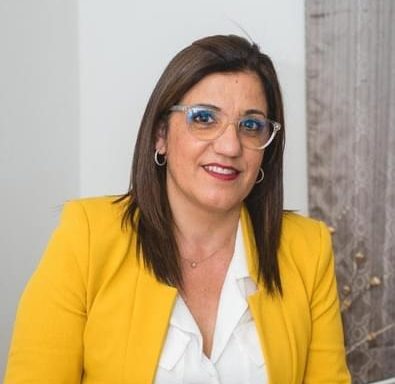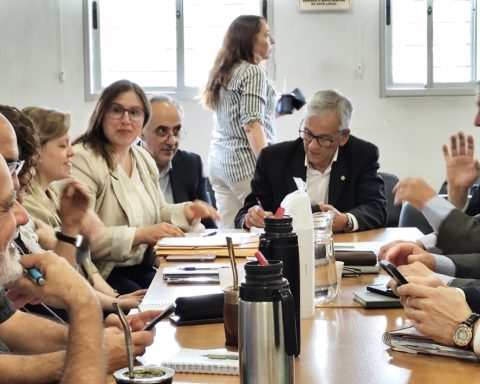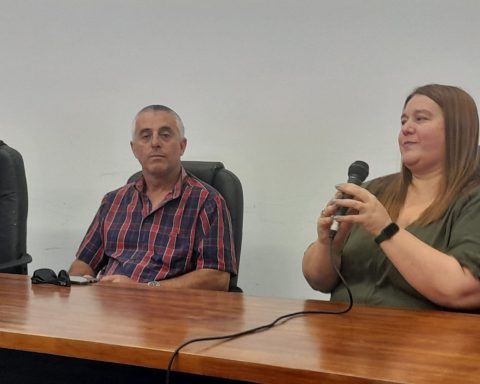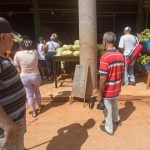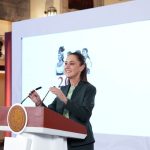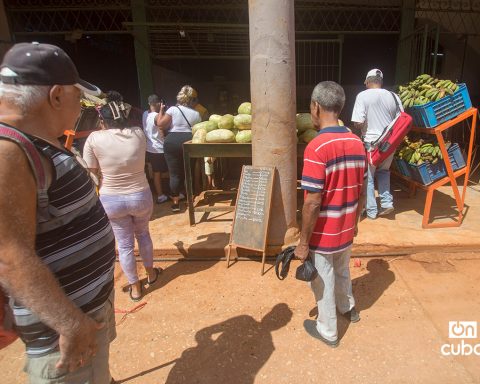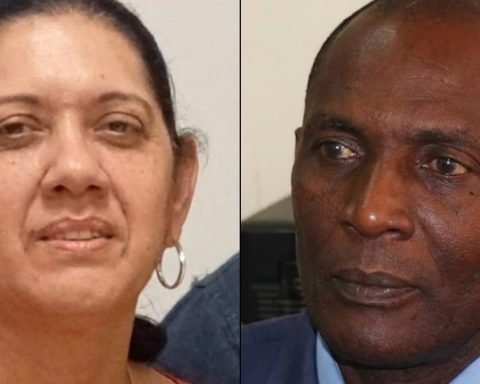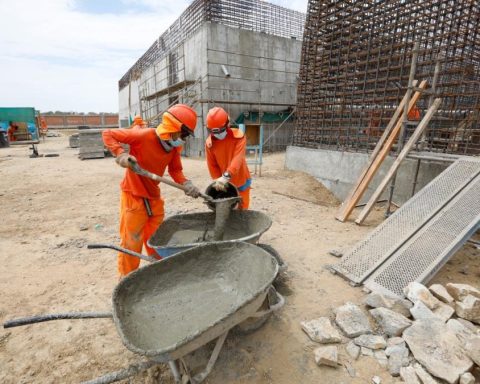The Ministry of Economy and Finance (MEF) gave one presentation in which he reported on the macroeconomic situation and outlook of Uruguay last week, where he included data about the poverty reduction in 2021. The Minister of Economy, Lily Arbeleche, noted that in the first half of 2021 the number of poor was reduced by 50 thousand people of about 100 thousand that had risen due to the pandemic in 2020.
In addition, he added that Poverty was reduced more in households that are “headed by women”, which “is due to the targeting” of support given to children. “This has also reduced poverty more in childhood, in children between 0 and 6 years“, said. The final data for the end of 2021 will be released by the INE next month.
One of the slides presented by Minister Arbeleche in Executive Tower
In the same line, President Luis Lacalle Pou endorsed Arbeleche’s numbers in statements to the press on Wednesday. “When yesterday (on Tuesday the 15th) the Minister of Economy gave the number of children who have come out of the poverty level… (the population of poor children) is a lower number than it was before the pandemic“, he declared.
The president said that the government is not satisfied but “it is clear that the effort was made and that the results are objective: the numbers cannot be discussed“.
However, in the last week there was no shortage of those who, by putting all the elements under the microscope, found reasons to launch into doing exactly what the president ruled out: discuss the numbers.
Child poverty: decreased from 0 to 6 years
Two days after the MEF report, the journalist Ricardo Leiva ignited the controversy by analyzing the numbers in your program Do not touch anything from Del Sol radio.
“If the annual data for 2019 is compared with the semi-annual data for 2021, a 0.9% drop in poverty for children under 6 is indeed observed,” he acknowledged. Nevertheless, “You also see a 2 percentage point increase—more than double—in school-age children ages 6 to 12 and a 3.6 point increase—much larger—in adolescents ages 13 to 18,” weighed.
“In fact, if one looks at the whole graph, the only strip where poverty falls is the one chosen by the ministry to present its numbersin all the others it goes up. Then child poverty grew —and grew significantly— between 2019 and the first half of 2021″Leiva pointed out..
“Manipulation of public opinion: the government’s supposed achievements in reducing child poverty,” economist Jorge Polgar wrote after Leiva’s column. Polgar was president of the BROU, of the BHU and undersecretary of the MEF during the governments of the Broad Front; Today he is an adviser to Senator Mario Bergara.
In short, between 2020 —marked by the emergence of covid-19 in Uruguay— and measuring the first six months of last year, poverty was reduced at all ages. But the government launched to compare the latest estimate with the percentages of 2019, and that is where it did so only in the only strip where poverty decreased; among children under 6 years of age.
Why a semester is not the same as a year
Due to changes in the methodology of the National Institute of Statistics (INE), the measurement presented by Arbeleche corresponds to the levels of the first half of 2021 and not to a full year.
On December 9 of last year, when the poverty figures were already public, the economist Gabriel Oddone suggested taking the numbers carefully in the Economic Forum that ACDE celebrates annually. Poverty in 2019 had been 8.8%, in 2020 it was 11.6% and it had just been known that in the first half of 2021 it dropped to 10.2%.
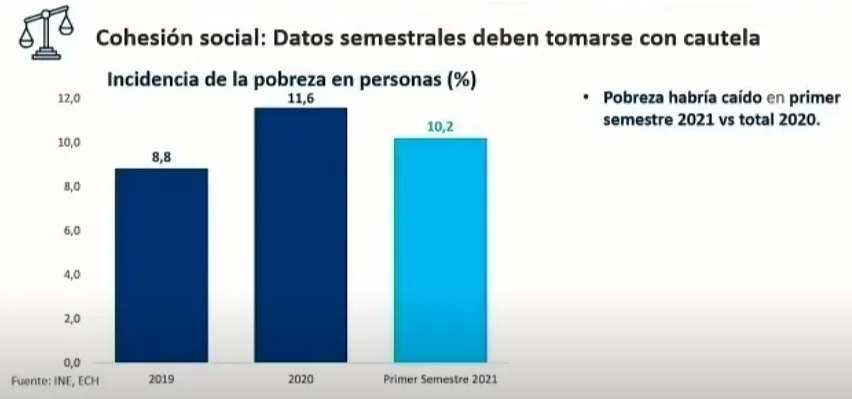
CPA-Ferrere (used by Oddone in the ACDE Forum)
On that occasion, Oddone warned that “Poverty has in its determinants seasonal factors, because bonuses are collected when they are collected, vacation salaries are collected when they are collected, that affects income and that has effects on the level of poverty”.
In order to emphasize the importance of time windows to measure poverty, the economist then showed that If the numbers for the first half of 2021 (10.2%) were compared with the closing point data for the previous two years (9.6% and 9.5% each), it could be said that poverty “increased”.

CPA-Ferrere (used by Oddone in the ACDE Forum)
Fewer poor children… but also fewer children
Among the slides that the MEF showed, one of the most controversial was the one that alluded to the reduction in the number of poor children in Uruguay compared to the year prior to the pandemic. When showing it, Arbeleche announced that “in 2019 we had almost 43 thousand children in poverty and in the first half of 2021 a little less than 39 thousand children. Just over 4,000 stopped being in that vulnerable situation”, calculated the minister.

The slides in question (MEF)
Despite this, the figure can be misleading because, in the same period of time, the decline in the birth rate in Uruguay meant that there are fewer children —poor or not— under 6 years of age.
In 2019, children between 0 and 6 years old were born from 2013, while in 2021 the same was true but from 2015 onwards. Therefore, between one measurement and another, those born in 2013 and 2014 stopped being counted, while those born in all of 2019 and 2020 began to appear.
This difference, which may seem trivial, is relevant because while between 2013 and 2014 there were about 97,000 births, between 2019 and 2020 the figure reached just over 73,000: almost 24,000 fewer children.
While it’s true that poor households have higher birth rates and that poverty among those under 6 went down anyway, the reduction of 4,000 poor children that the minister presented in that strip must be registered in a context of 24,000 fewer children in total over the course of two years to make an accurate comparison.
The response of the authorities
The Observer tried to communicate with the Ministry of Economy to give space to an official response, but from the agency they replied that “for the moment the MEF authorities will not make statements” and was sent to what was stated by the director of Economic Policy Marcela Bensión in a radio interview this Monday.
In interview with the things in their place of radio Sarandi, Bension said that it was decided to particularly highlight the reduction of poverty levels between 0 and 6 years because the government “has a special focus on children”, particularly from 0 to 3 years old, who are the ones targeted by the so-called “early childhood program“.
The chief explained that said program “involves allocating $50 million per year” to early childhood because it is understood that the situation of these children “is critical” and “they are going to be the men and women who are going to sustain this country tomorrow”.
Bensión added that “there is innumerable evidence and studies that investing in these children from 0 to 3 years old —in addition to being a humanitarian issue— has very positive effects on their cognitive development, their health and their levels of development.”
Finally, he summarized that “with respect to 2020 there was a general reduction, and particularly in the group from 0 to 6 there were reductions with respect to other years of measurement. These are public data and that is the reality of the situation. There has been a lot of commotion about this issue and it seems important to us to clarify that this is so”assured the director of the MEF.
